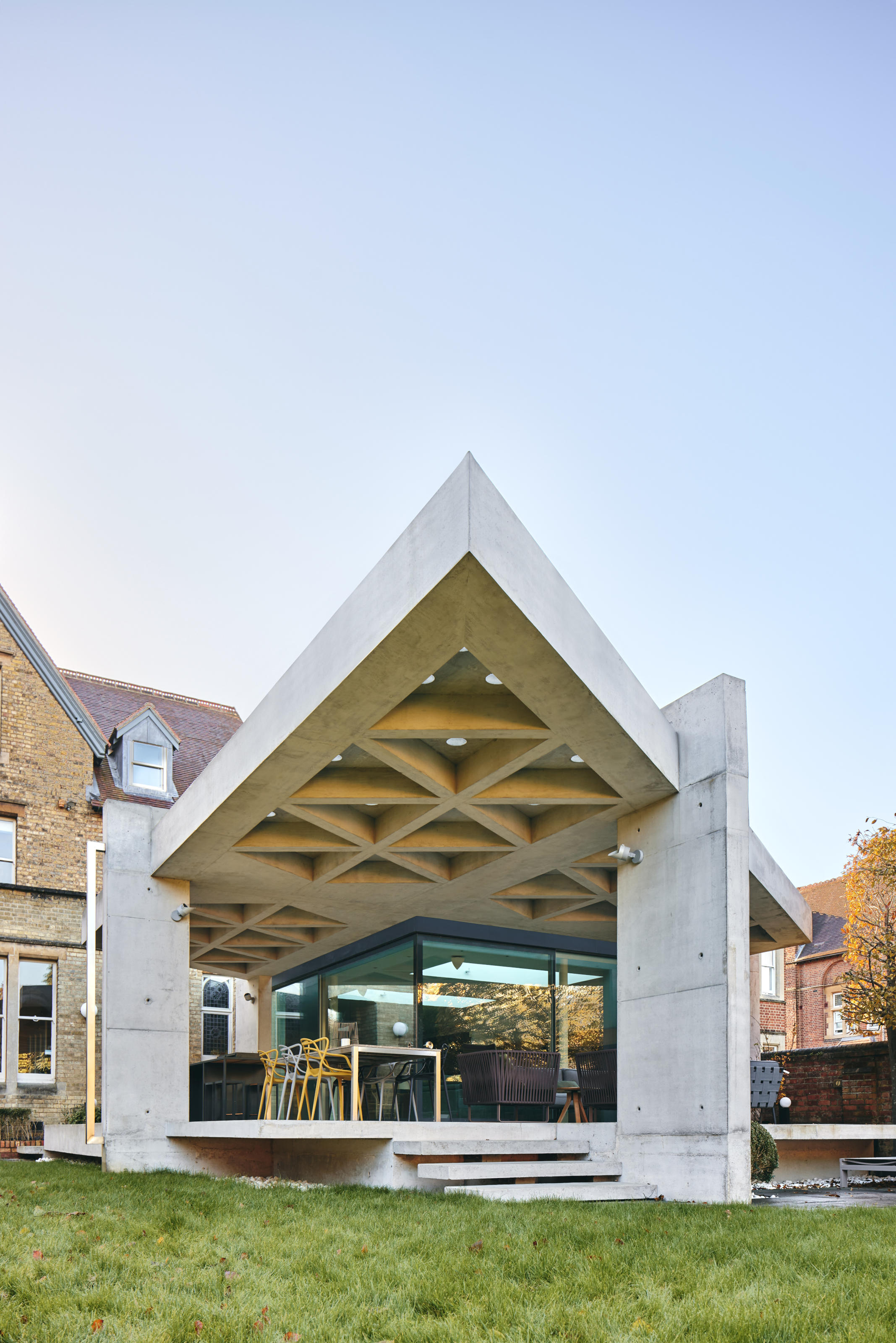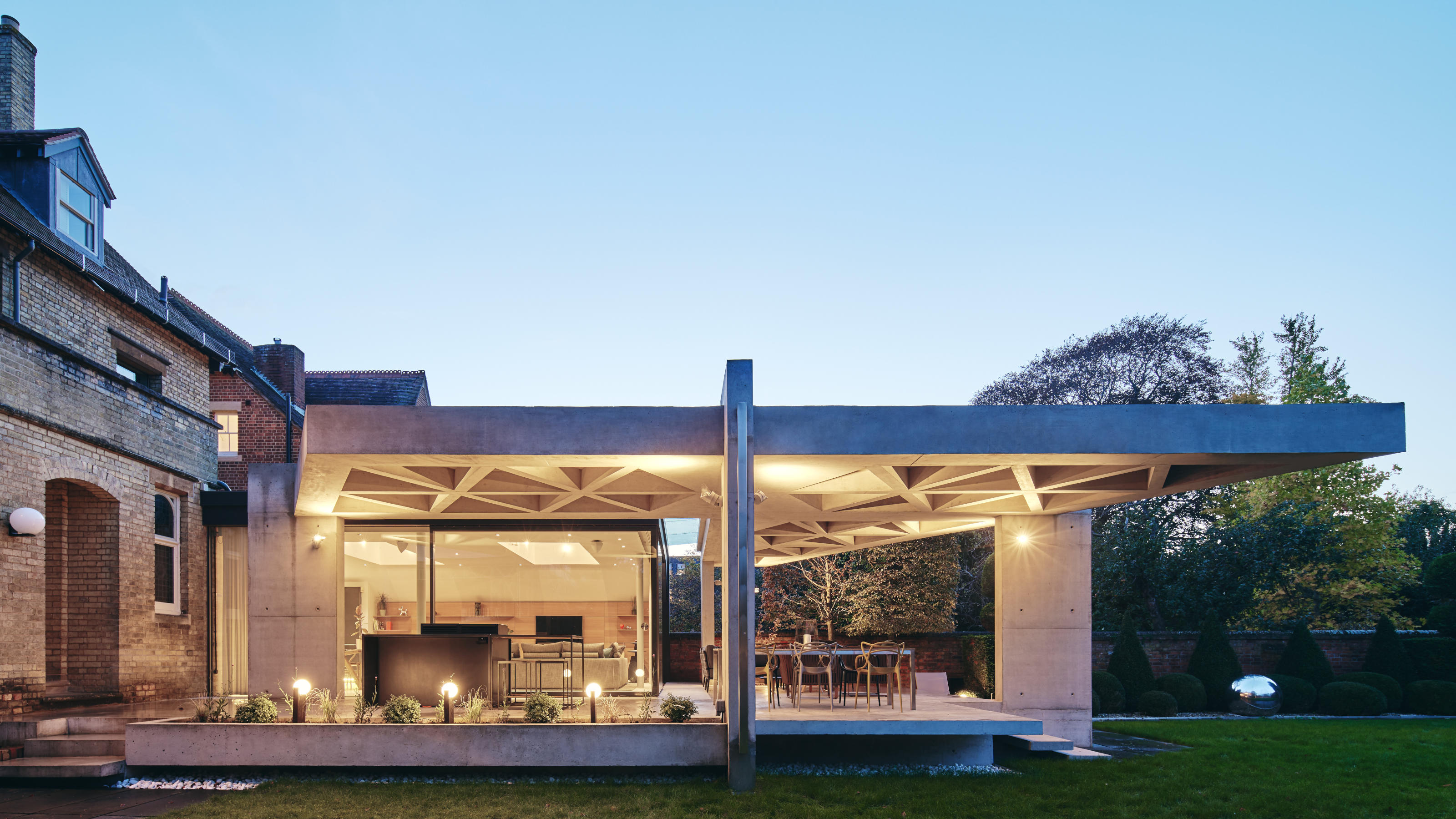
Although this new Oxford house extension is relatively small, it makes a substantial impact. Crafted from concrete, drawing inspiration from some of the most celebrated modernist architecture structures of the 20th century, Adrian James Architects has created what it calls a ‘gazebo with a difference’.
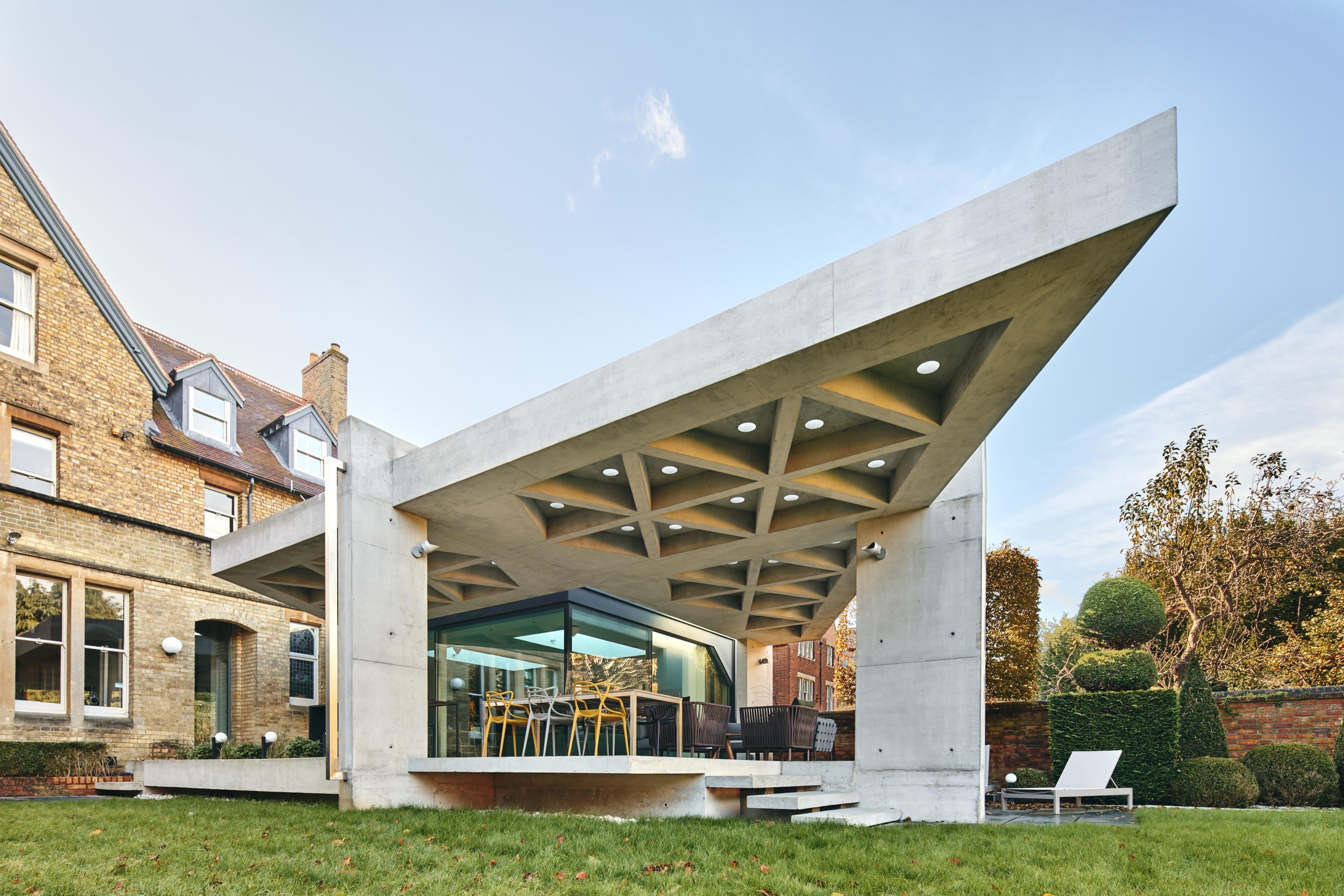
An Oxford house’s ‘concrete gazebo’
The new extension is shaped like a triangular wedge that extends out into the garden at the rear of an existing period house. Concrete is the dominant material, forming the floor slab, steps, columns and roof.
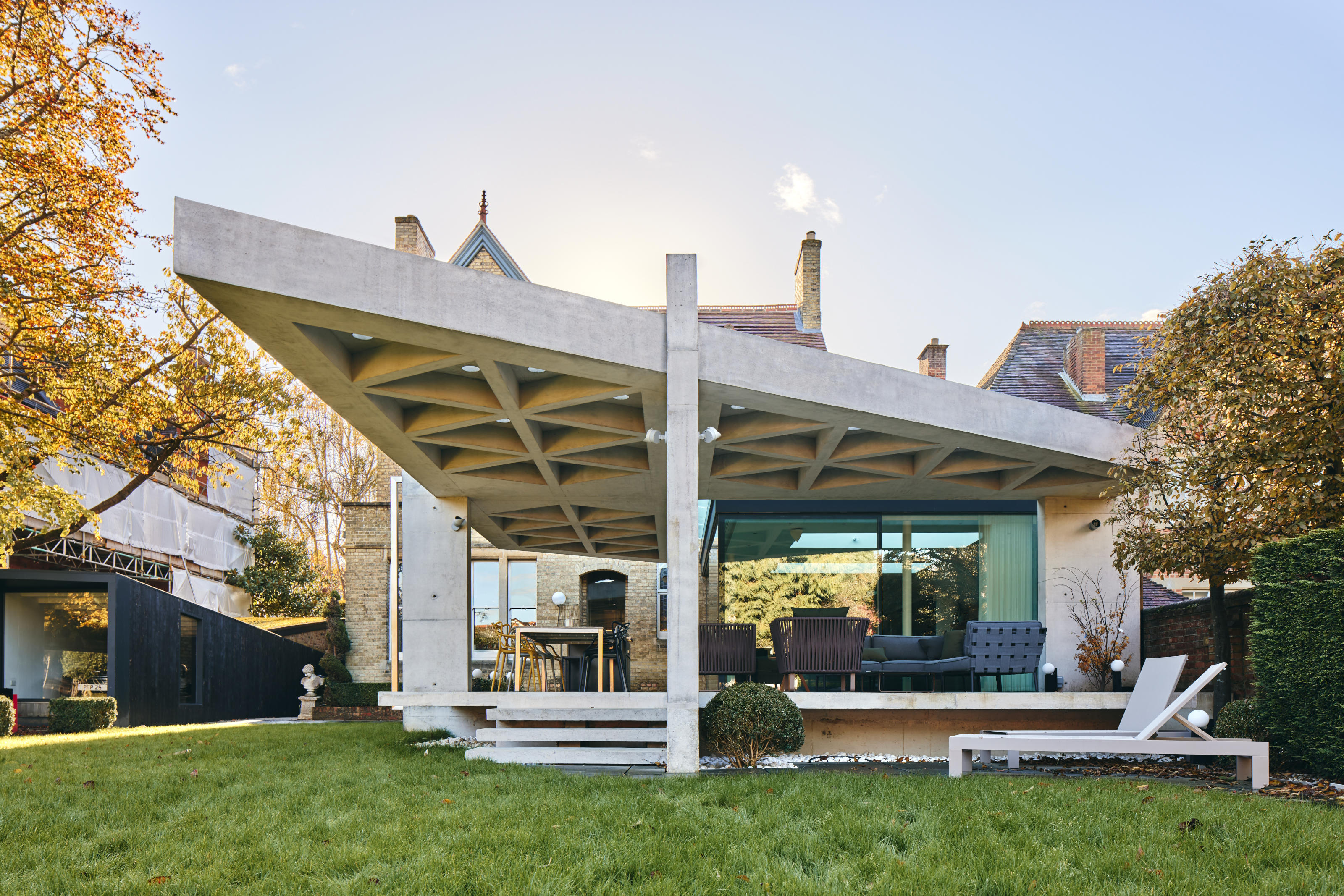
The latter cantilevers out across a new terrace, providing a covered space that wraps around a glazed living room extension. A response to the client’s request for a strong statement made from concrete, the architects have certainly delivered.
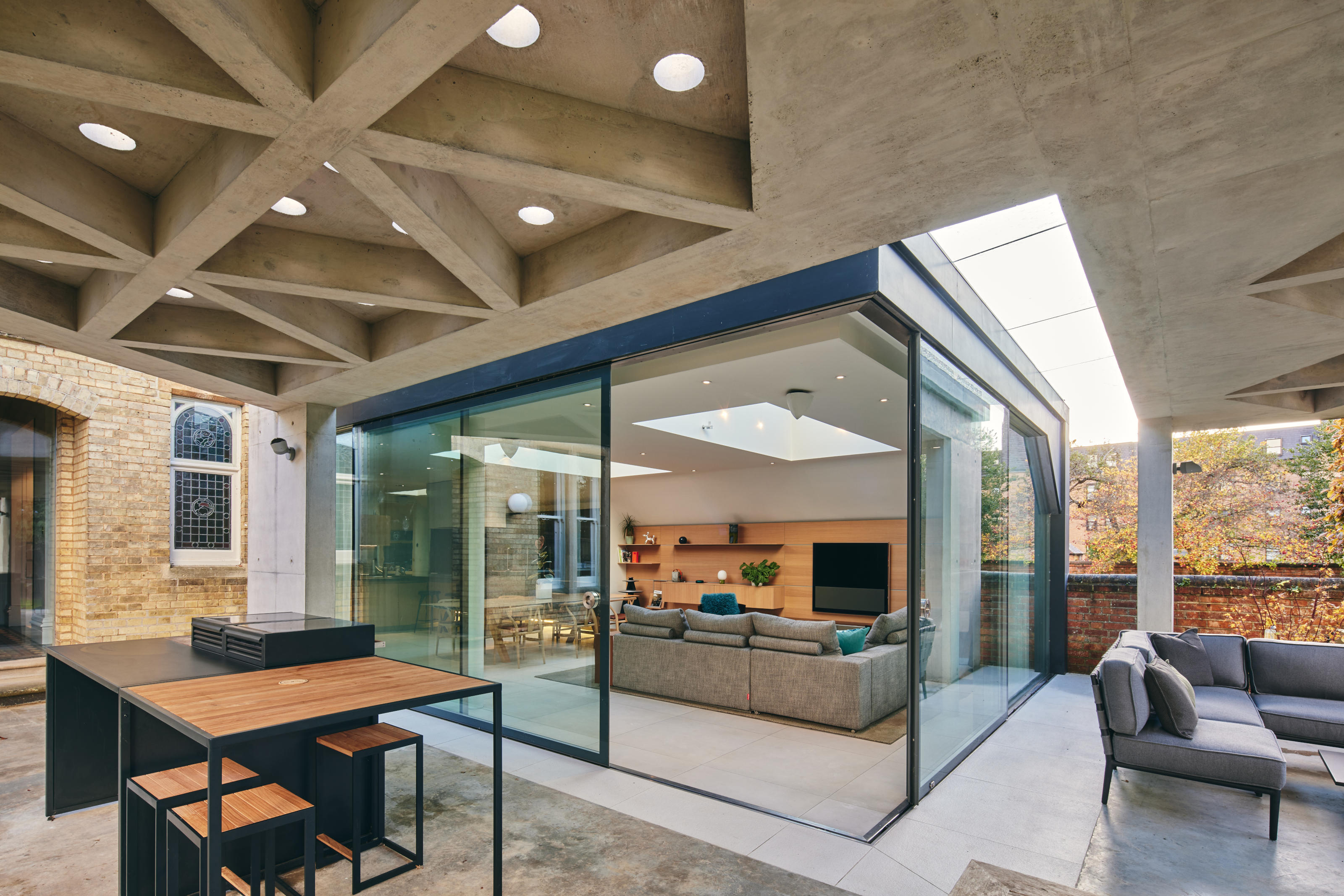
One of the key inspirations was John Lautner’s iconic Sheats Goldstein house in Los Angeles, and the underside of the new roof structure features inset triangular elements and circular pavement set into the concrete.
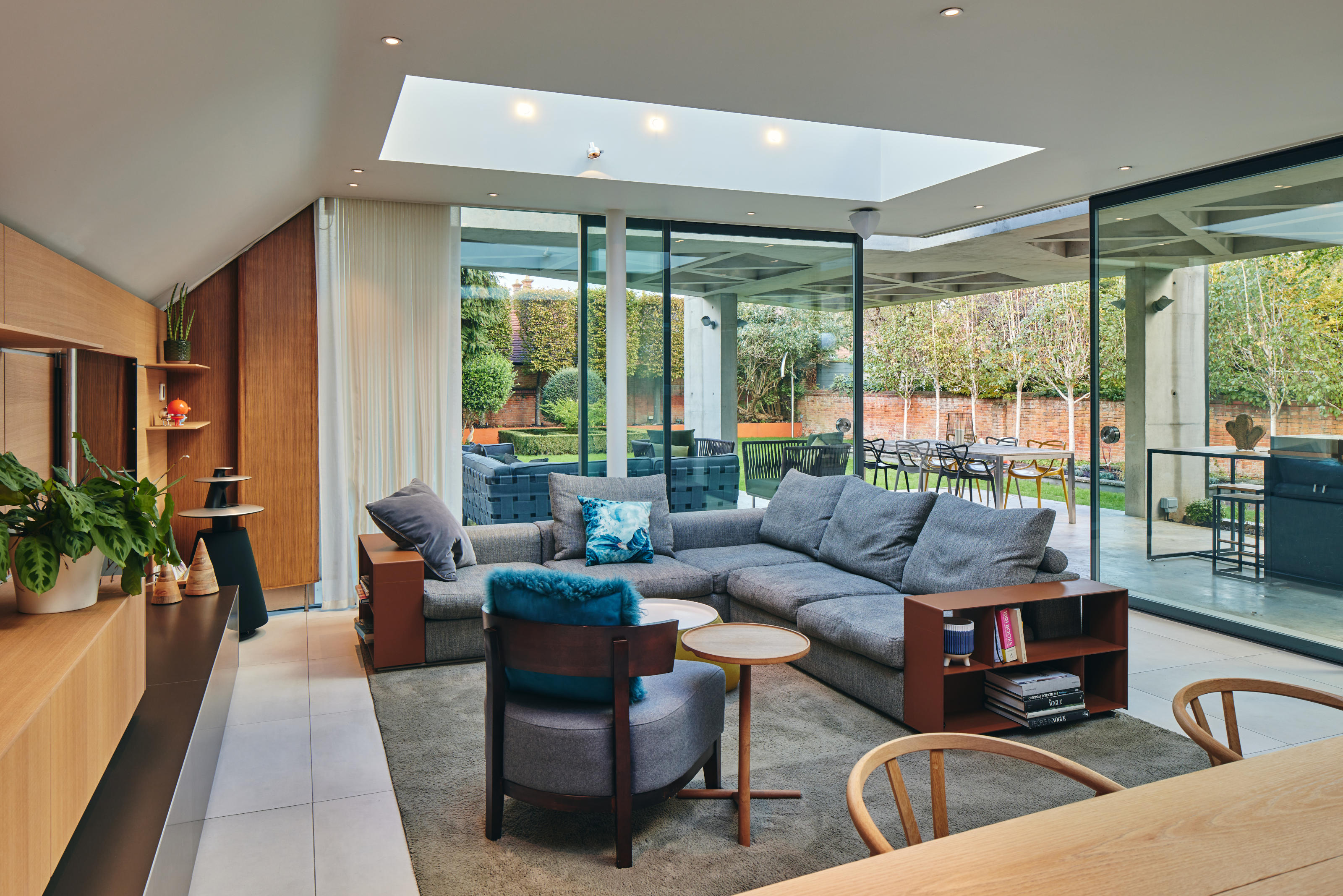
‘The brief for this project was simple: to provide shelter,’ the architects write. ‘Our client wanted a covered terrace in the garden so they could spend more time outdoors, day or night, rain or shine.
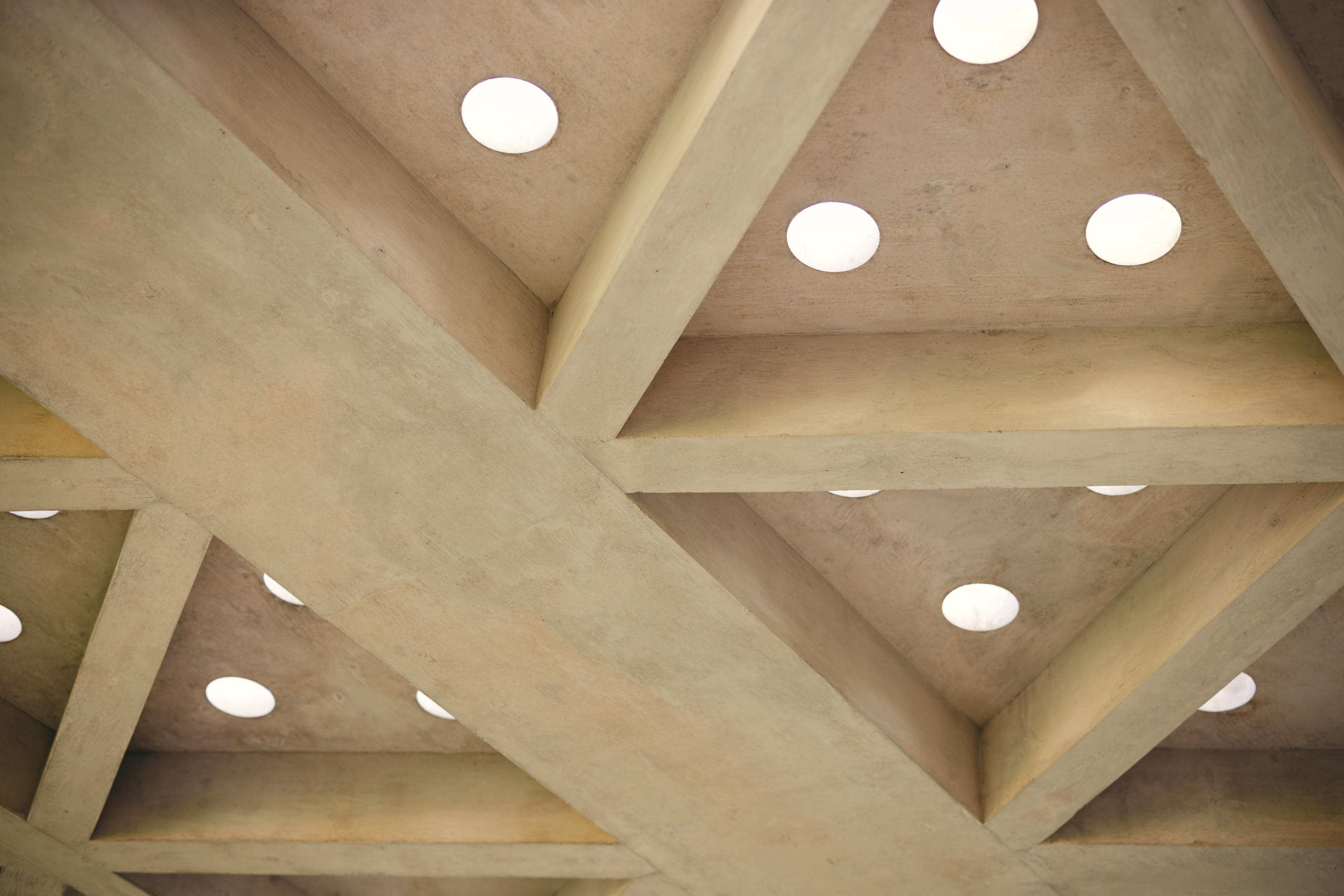
Beyond its pragmatic function the client also wanted something of higher architectural purpose. Supported on just four columns, the massive roof structure pulls off that rare trick of appearing far lighter than it actually is.
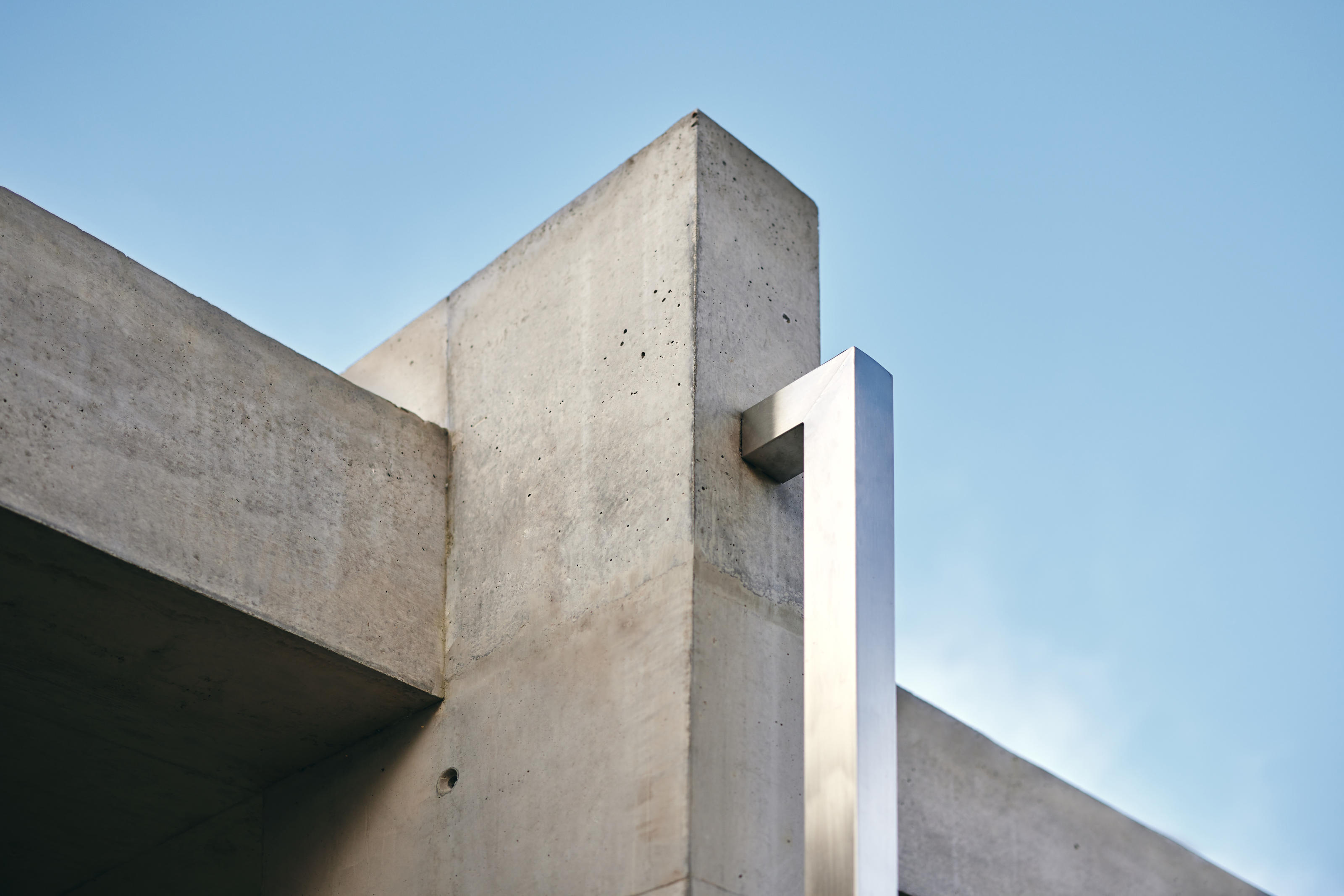
The flipside to this sculptural boldness and ‘structural gymnastics’ is concrete’s massive carbon footprint. ‘We were clear from the start that if we were going to use concrete we would need to compensate for it by properly and fully offsetting,’ the architects explain. ‘We researched the most effective and assured way to do this and the client has financed the requisite amount of new woodland planting in Yorkshire.’
